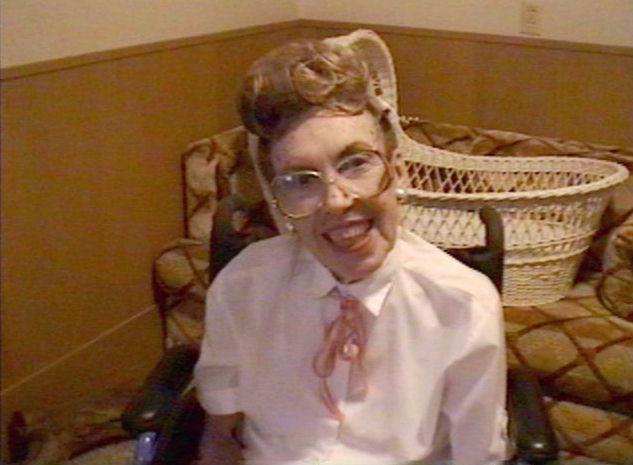

Shortly after the San Francisco
NSTA Convention when I
became secretary, John Marean,
who had assumed the
office of president at the same
time, contacted me about
the possibility of our collaborating
on a physical science
textbook. He had developed an idea
for one that he be-
lieved would make a unique contribution
of the science
curriculum.
We proceeded to write the first
three chapters. Since John
was acquainted with Stuart Brewster
of the Addison-Wesley
Publishing Company, arran~ements
were made for the
three of us to meet at the Christmas
meeting of the Ameri-
can Association for the Advancement
of Science in Phila-
delphia, Pennsylvania.
We spent some three hours with Stuart
discussing our
plans for the text and receiving
his input as to the
publisher's philosophy. To my great
astonishment, at the
end of the afternoon, Stuart pulled
a contract out of his
briefcase, we all signed it and
we were in business. To
celebrate, Stuart treated us to
dinner at the famous origi-
nal Bookbinders restaurant on Walnut
Street. This oc-
curred on December 27, 1962.
In 1968, our book, PHYSICAL, SCIENCE:
A Laboratory
Approach, was published. It was
also translated into
French for use in the Canadian
province of Quebec. The
book was revised in 1972.
Keys To Chemistry
During the winter of 1967 I began
to develop special ac-
tivities for my chemistry students
to stimulate their inter-
est with a somewhat different approach
to topics they found
frustrating. These experimental
projects were proving to
be so successful that I started
to think in terms of writing
a textbook that would tie them
together and result in a
chemistry text more appealing to
the general student than
the thick, college level books
that were monopolizing the
market. Those books were so heavily
laden with theory
and mathematics that it was comparable
to feeding a baby
adult meals before it was able
to digest pabulum.
By the time NSTA met in Washington,
D. C. in March, I
had completed the first draft of
three chapters and had an
outline for the laboratory manual
and teacher's guide I
visualized. Since I was already
known to the Addison-
Wesley personnel, I arranged a
conference with Art Bartlett.
After listening to my proposal,
he said, "Elaine if you can
have the first draft of the textbook,
laboratory manual and
teacher's guide finished by the
end of June, we will have
them Xeroxed and put them in at
least six schools on a
trial basis in the fall."
I enlisted the help of my friend
and colleague, Jean Casey,
who is an excellent typist and
together we met the June
30 deadline with camera-ready copy.
Two of my students,
Debbie Veale and Johnnie Merilatt
did many of the illus-
trations for the text.
I secured teachers who were willing
to try the book in
Xeroxed form and in September,
1968, we began using it
with students. On the basis of
my own experience and the
feedback from the other teachers,
I revised the manuscript
and in the summer of 1969 we produced
a second trial
edition. This process was repeated
again and in the fall of
1970. Addison-Wesley advised me
that they were ready to
produce the textbook in hardback
form for general distri-
bution.
At that time I asked Dr. Jay A.
Young, chemistry professor
at Auburn University, to work with
me as co-author. For
years I had known of his creative
innovations in the area
of chemistry instruction. Fortunately,
he was interested.
With his input and the talented
editorial supervision of
Clyde Parrish at Addison-Wesley,
the first edition of Keys
of Chemistry was released in the
spring of 1973 just in
time for my NSTA Convention in
Detroit. It was totally in-
dividualized to enable students
to progress as rapidly as
they could master the material,
although a teacher could
keep a class together if he desired.
We did a minor revision with a 1977
copyright and it made
the Texas list of approved chemistiy
books on the second
ballot of the textbook committee.
The book was also translated into
French for use in the
Canadian Province of Quebec. We
got many adoptions and
were fortunate to get the Province
ofAlberta, Canada. My
first royalty check for only six
months of sales totalled
$16,747.00 - a greater sum than
my salary for that year in
the teaching profession.
The entire experience of publishing
this program was a
professional triumph for me and
the memories surround-
ing it are among my happiest of
all time.
Keys to Chemistry
To each of you who come with
eager mind,
Young, unprejudiced, and
free,
Who seek to give some service
to mankind,
I offer you these keys to
chemistry.
Use them to reveal old truths
already known,
Knowledge that the past has
stored;
But may you fashion new keys
of your own,
Unlocking vistas man has
not explored.
... from Enfold the Splendor
==================================
A Chemistry Teacher's Prayer
They come imploring, Teach
us chemistry,"
As if knowledge is dispensed
Like reagents on a tray.
There are so many, Lord,
and each with needs
That I may never know about.
Let me be aware that with
the symbols and
reaction rates
I teach far more than what
is listed in the guide:
Attitudes and values,
Man's concern for man,
The unique worth of individuals,
These they learn from what
I am and do,
and not by what I say.
Oh, Master Teacher, let me
daily learn from Thee
That I may teach the youth
entrusted to my care
Not only chemistry,
But help me point the way
By which every student in
my class
May realize his highest destiny.
··· from Enfold the Splendor